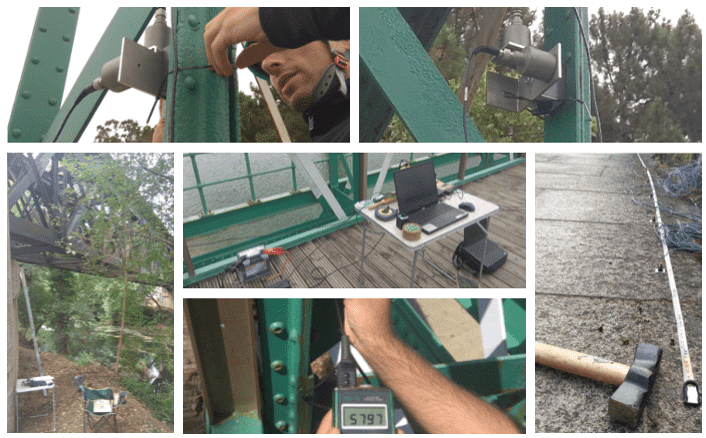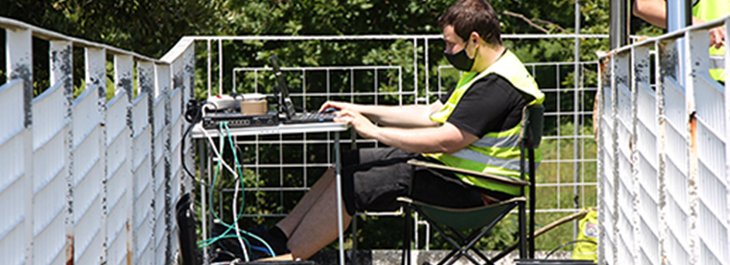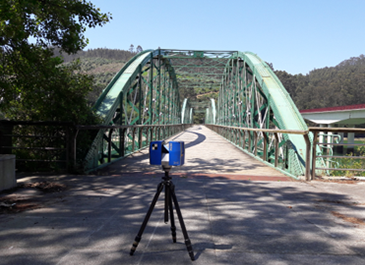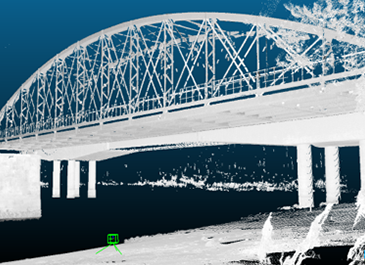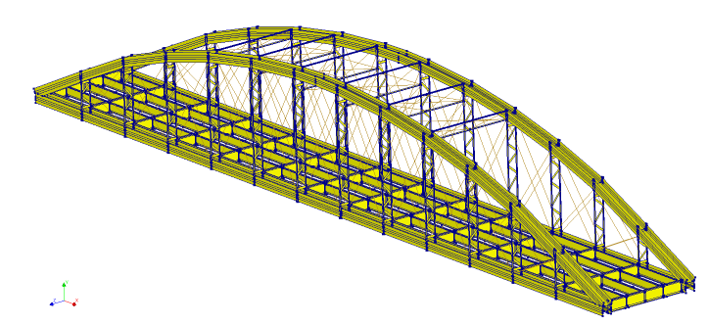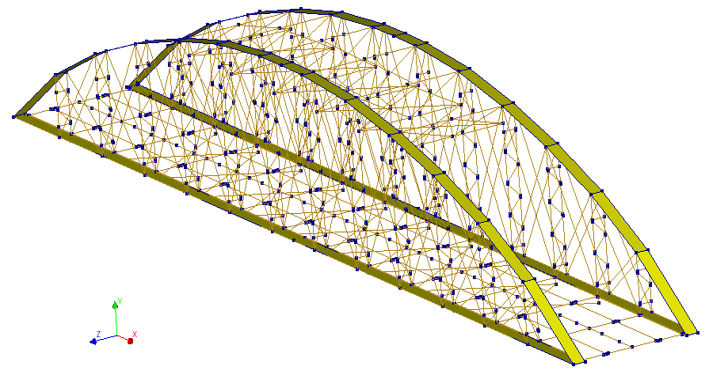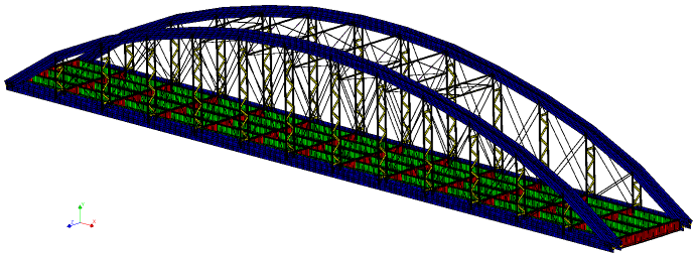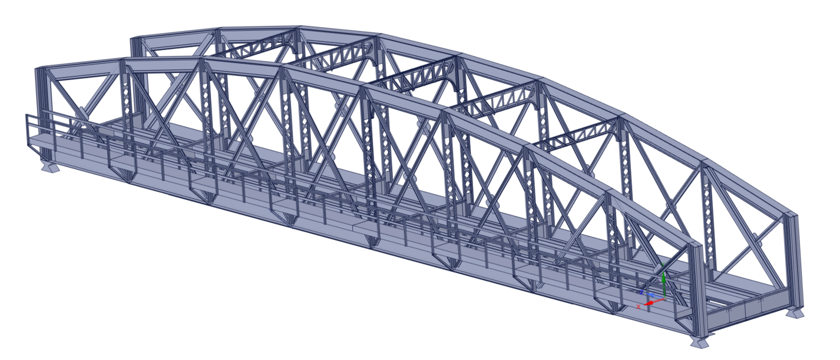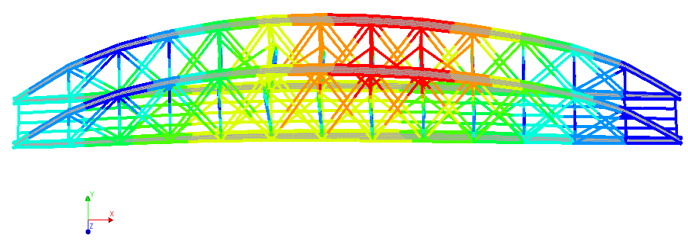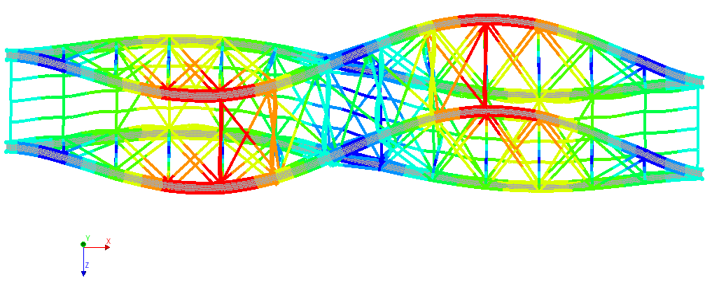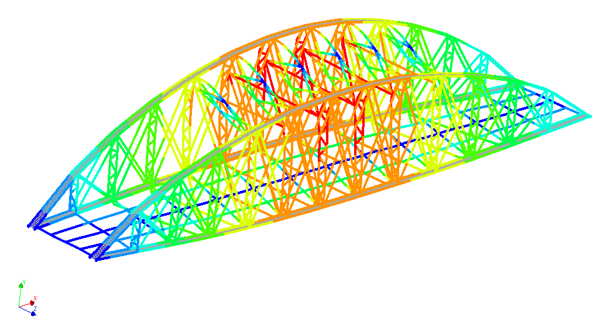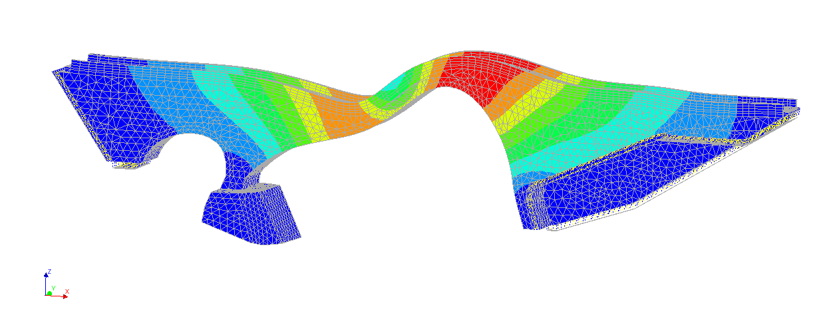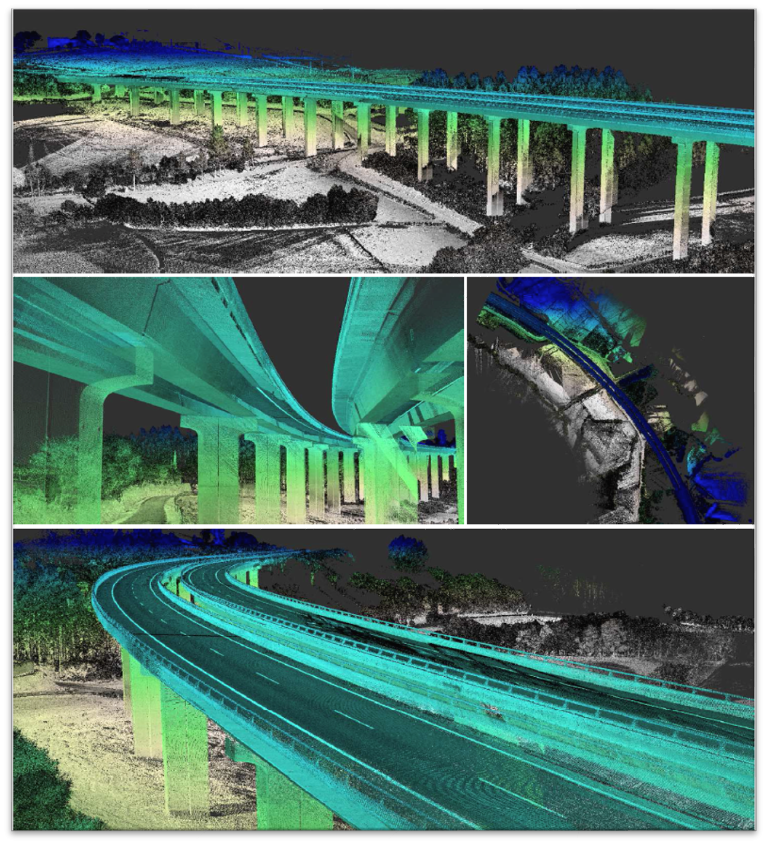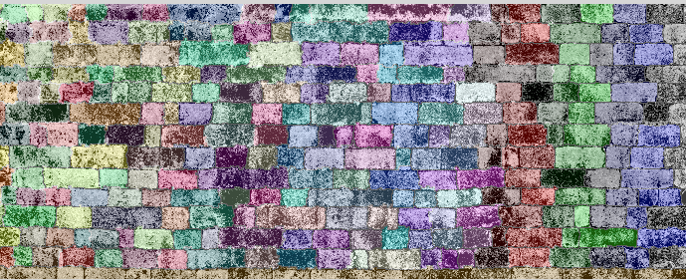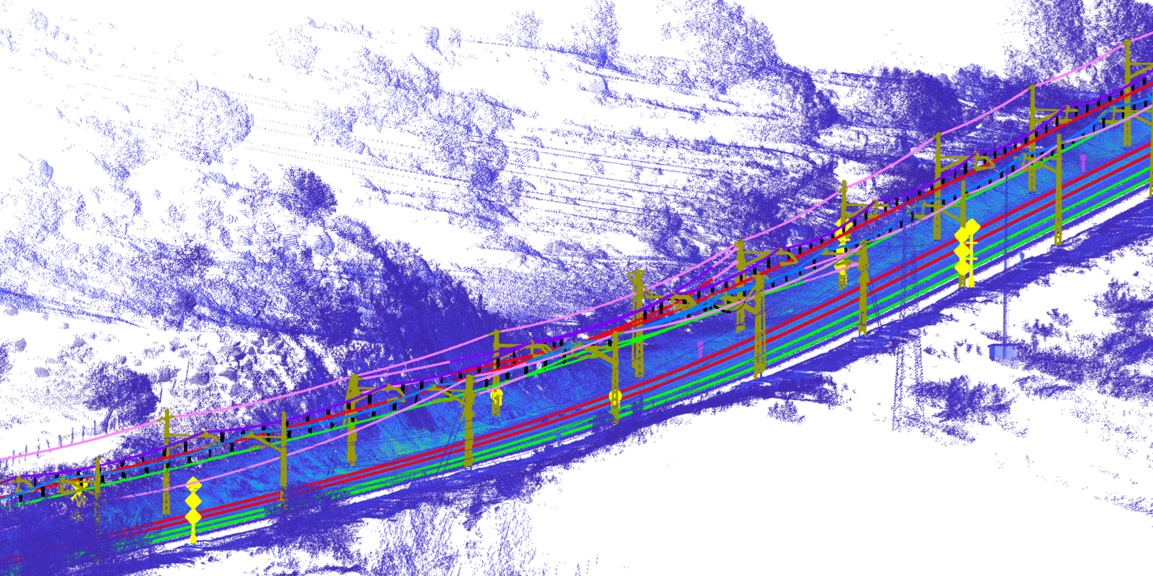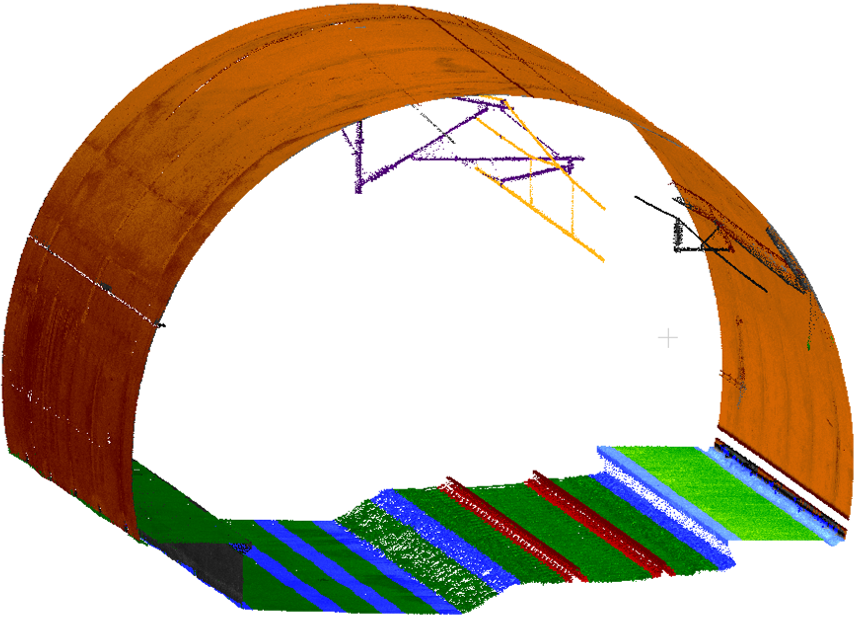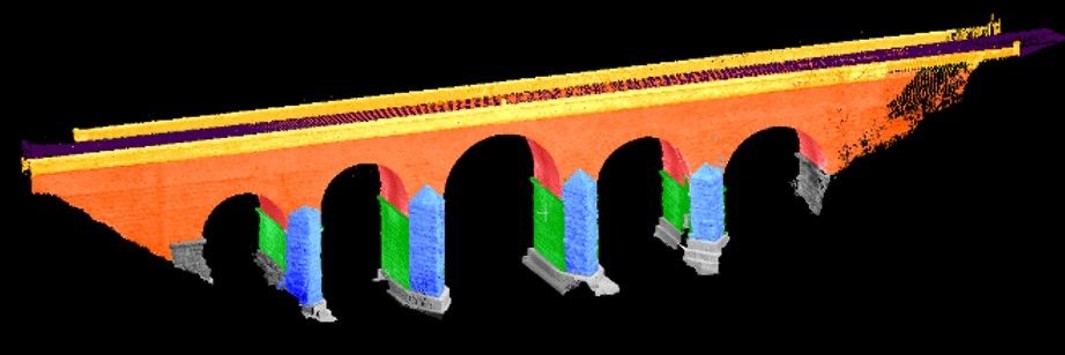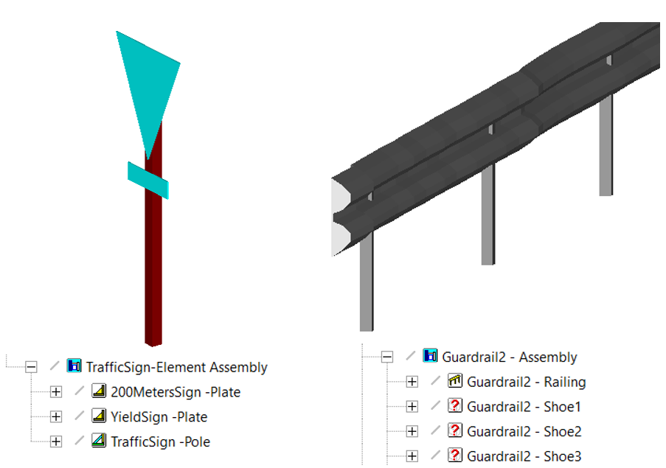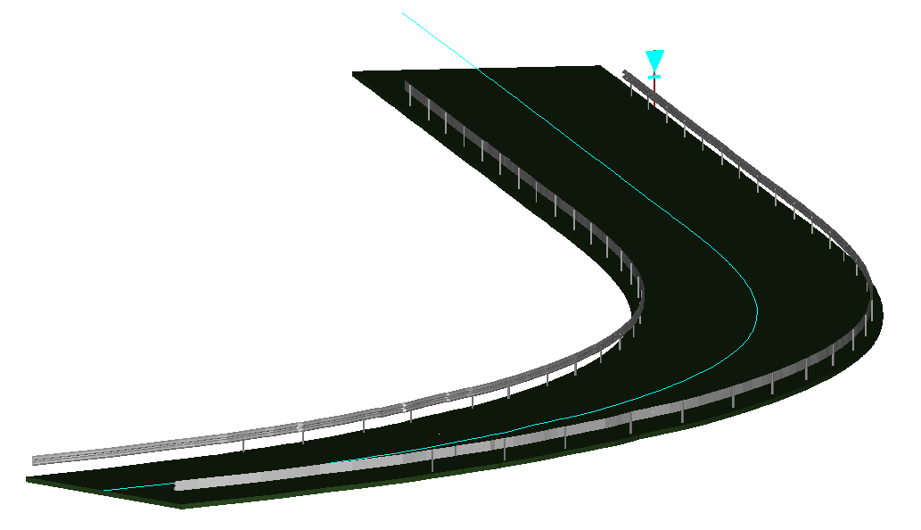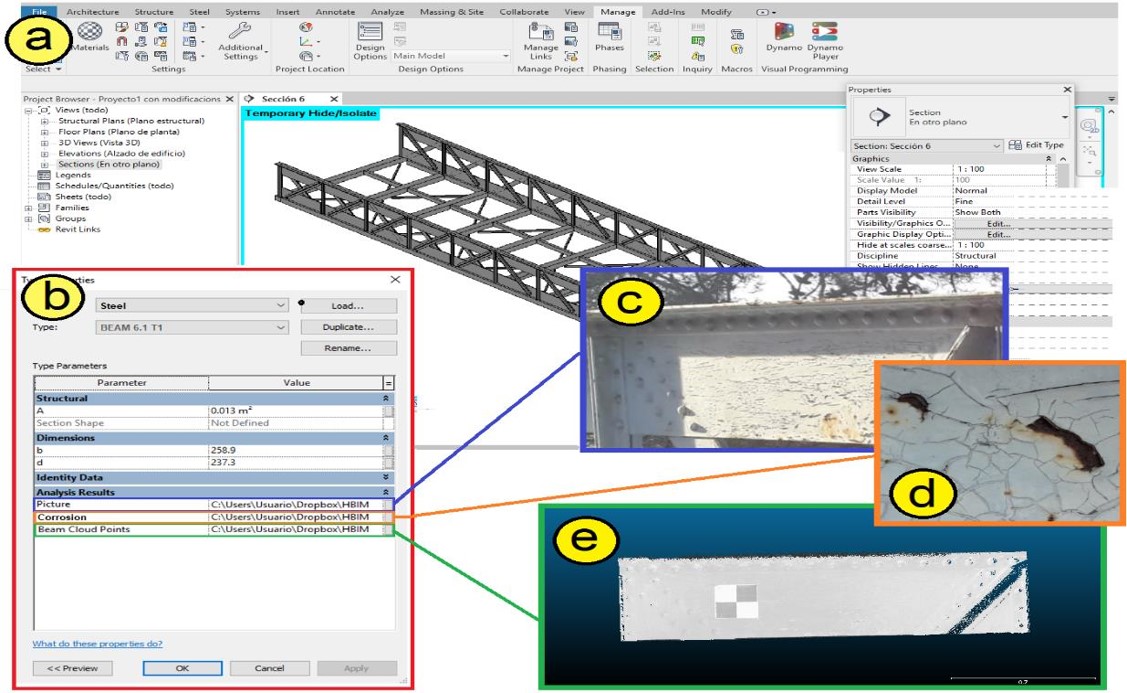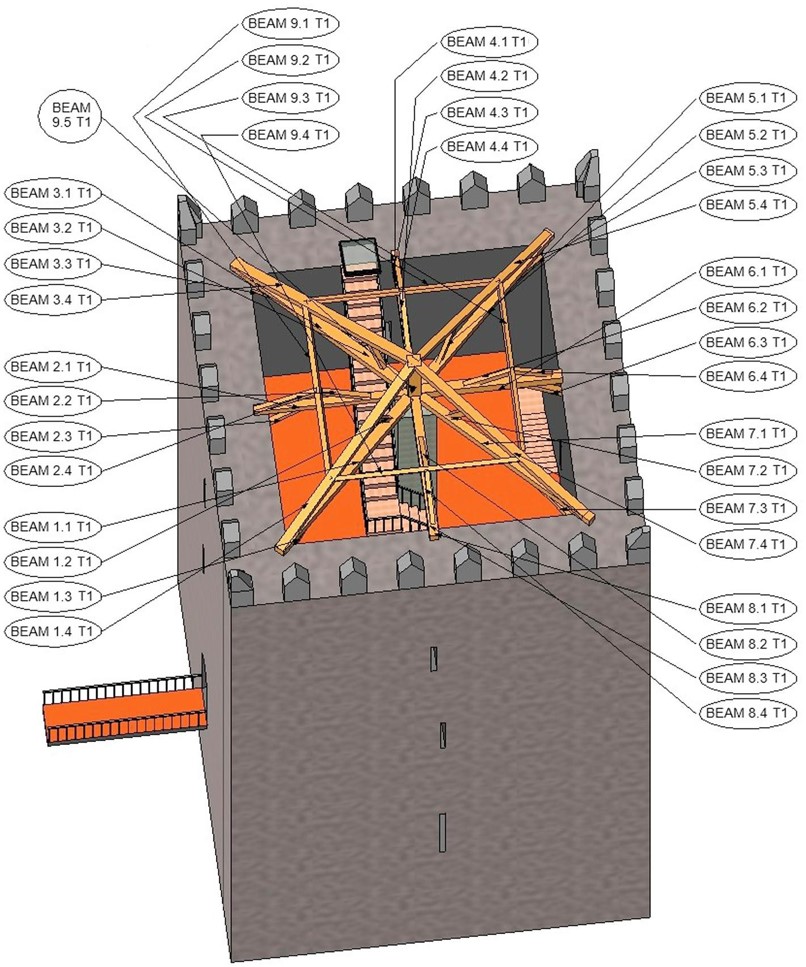Do your need innovative solutions to evaluate the structural safety of a system or infrastructure?
Structural health monitoring (SHM)
SHM consists of the observation of the structure’s response and the analysis of the experimental data collected in order to detect changes in material material and geometric properties that might jeopardize the structural integrity. Such monitoring has opened interesting research lines that allow the update of numerical models in order to more accurately represent the structural performance. During the last decades this field has undergone significant development with the advances of sensor technologies and the appearance of wireless sensors that multiplies the possible applications.
After several years of development and growth, our group has acquired a large and multidisciplinary experience in the field of structural health monitoring. We have successfully developed multidisciplinary methodologies including data from laser scanning, operational modal analysis, strain gauges, ultrasonic tests, indirect sonic impact tests, among others. This multidisciplinary approach allows us to create and update numerical models in order to more accurately assess the structural safety of in-service constructions.
Numerical Modelling
The numerical models are powerful tools in civil engineering to determine the degree of safety of a structure, if it is damaged or to quantify its service life between others. Perform a correct design of a numerical model is a challenge in which the experience, the knowledge about Finite element modeling is essential.
We have experience in different model techniques as beam, shell or 3d modeling using different software as Ansys, Diana or Abaqus. In addition, we have developed several numerical model of different masonry and steel bridges. We have also collaborated with recognized researchers who support us in the application of other numerical modelling techniques such as the Discrete Element Method.
Model Updating & Reliability
The uncertainties about in-service structures lead to significant differences between the numerical models and the actual behavior of the structure (eg. due to degradation processes or structural damages). Model updating methods allow the calibration of numerical models by minimizing the differences between predicted and actually measured structural response. This procedure provide us with numerical models that accurately represent the real behavior and state of the structure.
In the last years we acquired experience in the model updating framework, addressing research topics related to: surrogate modeling, sensitive analysis, deterministic and probabilistic algorithms.
Bridges are one of the most vulnerable assets of the inland transportation networks. Their collapse normally lead to dramatic consequences such as human andlarge economic losses. Preventing its collapse is a priority for civil engineering where multiple methodologies to assess and update the structural reliability have been developed.
One of the main applications of updated numerical models is the assessment of the probability of failure of a certain structure, and its reliability index. In this sense we are investigating various lineal and non-lineal probabilistic techniques. Our experience comprises both masonry and steel structures, subjected to different loading scenarios including light and heavy vehicles, trains or persons.
Automated inspection of infrastructure
Terrestrial mobile mapping technologies have changed the vision on how to conduct routine inspection of constructions and infrastructure, which for many years was done by visual inspection methods complemented with rudimentary measurements. With the growing of digital technology, the inspection procedures also evolved thanks to the use of special machines, which in many cases relied on remote and non-destructive techniques to measure and visually detect damages by an experienced operator. Within these new approaches, laser scanning is probably one of the technologies that has impacted the construction and civil engineering fields in a greater manner due to its ability to massively, accurately and efficiently register the 3D geometry of existing buildings and structures.
In the last decade, there has been a significant evolution of the scanning instruments, eg. from static stations to mobile scanning systems that can be mounted in many different platforms such as vans, boats, backpack solutions, indoor trolleys. These mobile mapping systems enlarged the ratios of data acquisition that motivated the emergence of a new research line focused on automating data processing. We accumulate a large experience in developing and validating methods for automatic or semiautomatic data processing in order to facilitate the adoption of 3D point clouds in different domains such as structural engineering of in infrastructure maintenance. Our approaches include either heuristic rules or more advanced machine learning techniques, where deep learning applied to 3D point clouds represents one of the current hot topics in laser scanning research.
Scan-to-BIM
Infrastructure assets are likely to change along time due to their intensive use combined with deterioration processes. For that reason, digital representations should represent assets during their entire lifecycle, this is, from design to the end of their useful life. These digital replicas should contain not only 3D geometrical data, but also semantically rich information representing the characteristics associated with the asset (materials, safety, occupancy, relations between components, etc.). These digital representations can be implemented through Building Information Models (BIM). BIM presents a methodology for collaborative work in a common data environment where information can be shared and exchanged using a data model, such as the Industry Foundation Classes (IFC).
This context motivated our research in the generation of IFC-complaint models from point cloud data of infrastructure and buildings. In the last years we have been focused on two main research lines:
H-BIM: this is the generation of BIM models for historical constructions. In this case, our main application consist of using laser scanning for the 3D reconstruction, inspection, structural analysis of historic structures and the integration of the models produced in BIM platforms.
Automatic generation of IFC-complain models in the infrastructure domain (road, rail and bridges) from automatically processed point cloud data.
Research Grants
Métodos de aprendizaje profundo para análisis de estructuras como herramienta para anticipar el colapso de puentes en servicio.
2021 – 2022 | Becas Leonardo a Investigadores y Creadores Culturales Fundación BBVA 2021 | 39.930,00 €
Main researcher: Belén Riveiro Rodríguez
Life-cycle assessment of existing bridge structures using multiscale and multisource data – LASTING.
2019 – 2021 | Spanish Ministry of Science, Innovation & Universities | Retos Investigacion | 181.500,00 €
Main researcher: Belén Riveiro Rodríguez
Strengthening infrastructure risk management in the Atlantic Area – SIRMA.
2019 – 2022 | European Union | Interreg Atlantic Area EAPA_826/2018| 2.023.995,00 €
Main researcher: Belén Riveiro Rodríguez
GIS-Based Infrastructure Management System for Optimized Response to Extreme Events of Terrestrial Transport Networks – SAFEWAY.
2018 – 2022 | European Union | H2020-MG-2016-2017 Ref. 769255-2 | 4.520.100,00 €
Main researcher: Belén Riveiro Rodríguez
Preparation and writting of a proposal to improve the resilience of transport inland networks to extreme events.
2017 – 2018 | MINECO | Ref. EUIN2017-87598 | 25.000,00 €
Main researcher: Belén Riveiro Rodríguez
System for the diagnosis of knocking-down risk in the interaction areas between pedestrians and vehicles for urban and road environments from mobile mapping technology (SDPA).
2017 – 2018 | DGT | Ref. SPIP2017-02122 | 49.940,00 €
Main researcher: Belén Riveiro Rodríguez
Healthy and Efficient Routes In Massive Open-Data Based Smart Cities: Smart 3D Modelling: HERMES-S3D.
2014 – 2016 | MINECO | Ref. TIN2013-46801-C4-4-R
Main researcher: Pedro Arias & Belén Riveiro

